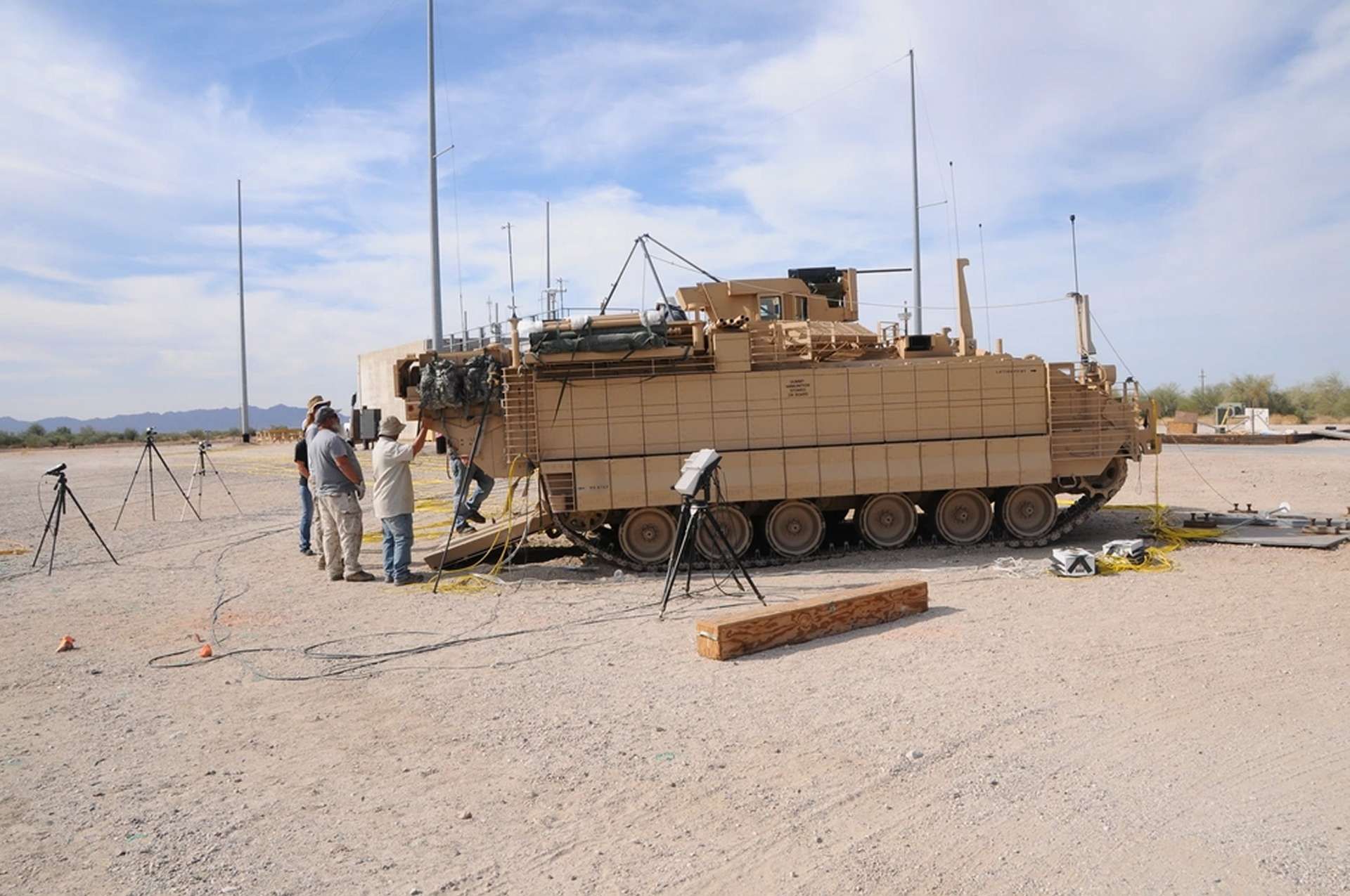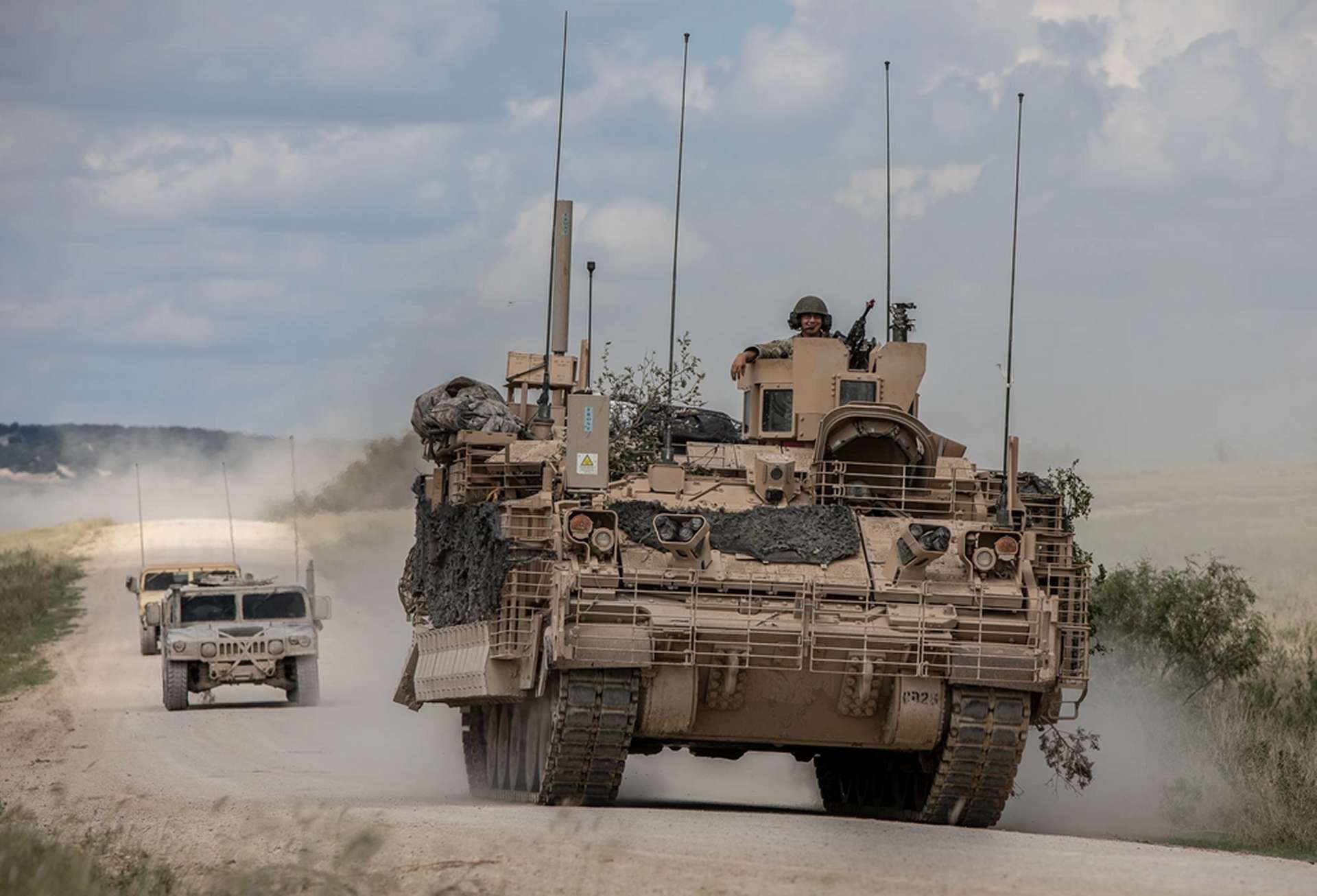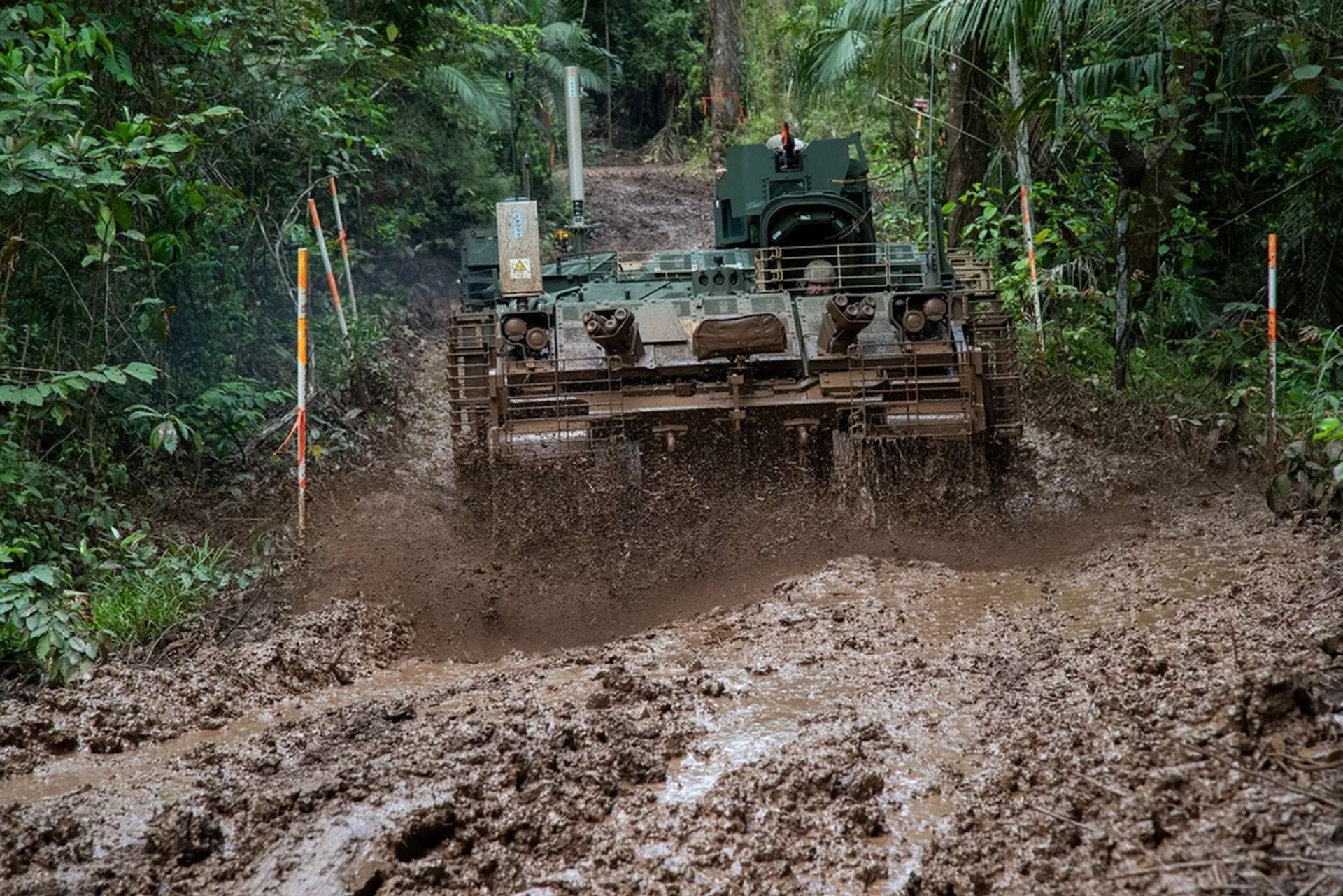Breaking News
US Army accelerates M113 replacement with new $184 Million AMPV order.
On October 9, 2024, BAE Systems received a $184 million contract modification from the U.S. Army for an additional 48 Armored Multi-Purpose Vehicles (AMPV), building on the existing full-rate production agreement. The AMPV Family of Vehicles (FoV) is being introduced to replace the older M113 series in the U.S. Army's Armored Brigade Combat Teams (ABCTs), offering modernized capabilities in survivability, mobility, and interoperability. The contract modification will support the Army’s plan to expand its fleet of AMPVs, thereby modernizing and improving the operational flexibility of the ABCTs.
Follow Army Recognition on Google News at this link

The Armored Multi-Purpose Vehicles (AMPV) program was initiated with a $383 million EMD contract in 2014, producing 29 prototypes before entering low-rate production to deliver 289 vehicles by 2020. (Picture source: US DoD)
The AMPV lineup includes five specialized variants, each designed for specific roles: the M1283 General Purpose (GP), M1284 Medical Evacuation Vehicle (MEV), M1285 Medical Treatment Vehicle (MTV), M1286 Mission Command (MC), and M1287 Mortar Carrier. The M1283 GP variant is utilized for resupply, maintenance, and casualty evacuation operations. The M1284 MEV is equipped for medical evacuation, accommodating up to six ambulatory personnel or four patients on litters.
The M1285 MTV functions as a mobile medical treatment facility, supporting battlefield care with equipment typically found in civilian ambulances. The M1286 MC variant supports mission command functions, enhancing command, control, and communication within the ABCT. The M1287 Mortar Carrier provides indirect fire support using the M121 Mortar System and the M95 Mortar Fire Control System.
The AMPV program has been pursued to address the limitations of the M113, a platform that has been in service since the 1960s. Although versatile, the M113 has shown vulnerabilities in modern combat scenarios, particularly during the Iraq War where urban warfare tactics exposed its weaknesses. The Army subsequently adopted Mine-Resistant Ambush Protected (MRAP) vehicles for active service. However, the AMPV is intended to offer enhanced off-road mobility, similar to that of the M2 Bradley and M1 Abrams, making it more suitable for a variety of operational environments.

The AMPV program has been pursued to address the limitations of the M113, a platform that has been in service since the 1960s, but has shown vulnerabilities in modern combat scenarios, particularly during the Iraq War where urban warfare tactics exposed its weaknesses. (Picture source: US DoD)
This follow-on order represents the Army’s shift in acquisition priorities, following the cancellation of the Ground Combat Vehicle (GCV) program. Initially, the GCV was intended to replace M2 Bradley vehicles within the ABCT, but cost constraints led to a preference for the AMPV program, estimated to cost over $5 billion, compared to the $37 billion projected for the GCV program. In April 2013, the Congressional Budget Office highlighted the AMPV as a more feasible option, and the Army’s FY 2015 budget proposal reflected a reallocation of resources to focus on AMPV production.
BAE Systems, in response to the contract modification, has expanded its production capabilities, particularly at its York, Pennsylvania facility. Alongside facilities in South Carolina, Alabama, Arizona, and Michigan, this network is designed to meet current and projected demand for AMPVs. The expansion aligns with the Army’s objective to gradually increase production, reaching full-rate production after an initial low-rate production phase that began in 2018. Production plans include an incremental ramp-up, from 57 vehicles in Fiscal Year (FY) 2023 to 122 units annually by FY 2026 and FY 2027, before reducing in later years.
The AMPV program’s phased approach began with a $383 million Engineering, Manufacturing, and Development (EMD) contract awarded to BAE Systems in 2014. This phase produced 29 prototypes, followed by a low-rate production phase to supply 289 vehicles by 2020. General Dynamics initially contested the AMPV requirements, claiming the design favored the BAE Bradley chassis. However, the Army Materiel Command dismissed the protest, stating that BAE’s manufacturing of the M113 and Bradley provided certain logistical advantages that did not constitute preferential treatment.

The AMPV’s modular design aims to manage operational costs, which for the AMPV are estimated at $90 per mile, compared to the M113’s $58 per mile. (Picture source: US DoD)
Following this decision, General Dynamics did not pursue further action through the Government Accountability Office but continued to advocate a mixed fleet concept to Congress. This proposal suggested combining tracked Bradley and wheeled Stryker vehicles, which General Dynamics argued could enhance mission flexibility and reduce life-cycle costs.
The AMPV’s modular design allows for future upgrades in communications and electronic systems, supporting the Army’s strategy of leveraging commercial off-the-shelf components. This approach aims to manage operational costs, which for the AMPV are estimated at $90 per mile, compared to the M113’s $58 per mile. By allowing for incremental upgrades, the Army plans to incorporate new technologies over time, including satellite communications, further integrating the AMPV into the digital battlefield.
Looking forward, the AMPV program includes potential future variants designed for counter-unmanned aerial system (C-UAS) roles. One such variant may feature the Leonardo DRS Maneuver Short Range Air Defense (M-SHORAD) turret, equipped with a 30mm XM914 cannon, a 7.62mm M240 machine gun, and Stinger missile launchers. This development aligns with the Army’s intent to adapt the AMPV for a range of defense scenarios within the ABCT framework, while also considering international interest in the platform.

The AMPV shares common elements with the M2 Bradley Infantry Fighting Vehicle and M109A7 Paladin, simplifying maintenance and logistics for the US Army's Armored Brigade Combat Teams (ABCTs). (Picture source: US DoD)
The AMPV continues to replace the M113 in Army units, such as the 1st Armored Brigade Combat Team of the 3rd Infantry Division, which recently replaced over 130 M113s with AMPVs after completing necessary training. This replacement supports the Army’s Next Generation Combat Vehicle Modernization Priority, with AMPVs designed to withstand threats from mines, improvised explosive devices, and direct fire. Their design shares common elements with the M2 Bradley Infantry Fighting Vehicle and M109A7 Paladin, simplifying maintenance and logistics for ABCTs.
BAE Systems has also developed additional variants to fulfill specific mission requirements. Recently, a turreted mortar variant was introduced, equipped with the Patria NEMO 120mm remote-controlled mortar system. This variant provides responsive fire support within the ABCT. With the full-rate production now underway, BAE Systems will continue to supply AMPVs to the U.S. Army, fulfilling both current operational needs and potential future requirements as the Army transitions its fleet to more modernized combat vehicles.


























